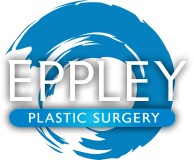Your Questions
Your Questions
Q: Dr. Eppley, I have a particular head which is pointed at the top and flattened behind. I have already had several consultations of which opinions are different. Thus I am confused. One opinion was to fill the flat areas by a material without touching the pointed top. Others proposed a craniotomy to cut the bone and reposition it so that the lump is found in the back and the flattening will be up at the top. Since I know you have great experience in craniofacial surgery and am familiar with many ways to change the shape of the skull, what are your thoughts between these two skull reshaping options?
A: While I have not seen a picture of you, I can only make some general comments. The preferred and more practical treatment to your skull concerns would be to do an external skull reshaping technique. This would be to burr down the ridge/high spots as much as possible and build up the flat areas with a cranioplasty material. The converse approach would be a craniotomy in which the bone is completely removed and reshaped. This would be a very aggressive approach to a cosmetic problem which is fraught with potential problems when attempted to be done in the very thick and vascular bone of an adult.
Dr. Barry Eppley
Indianapolis, Indiana
Q: Dr. Eppley, I was surfing the web when I came across your blog. As I was reading I got excited in hopes that you could be help for me. I am 35 yrs of age and all my life I have avoided anyone touching my head or getting my hair wet in public places such as a pool. The reason is that one side of the back of my head is flat. I think the medical term for it is deformational plagiocepahly. The back of my head is flat, my left side to be exact. In addition, my forehead is somewhat flat as well. This condition has severely bothered me. Growing up as a child was difficult, I had plenty jokes directed at me for the shape of my head. I have used a blow-dryer most of my adult life to camouflage this area as best I can. I would hope that you can help me. What can be done for it?
A: You are describing deformational plagiocephaly to a tee… a twisting of the skull during growth that creates a flattening on the back of one side of the head and a similar but more modest flattening on the opposite forehead. In severe occipital flattening in adults, I have performed cosmetic skull reshaping through an onlay cranioplasty technique. Most cases of a flat back of the heads have their locations up high above the ear level. Through a small vertical incision, the bone can be built up using either hydroxyapatite or acrylic. (PMMA) There are some advantages and disadvantages to either material and they need to be reviewed carefully with the patient. But the surgery is fairly easy to go through, one’s recovery is very quick, and the results are immediate.
Dr. Barry Eppley
Indianapolis, Indiana
Q: Dr. Eppley, I am interested in an onlay cranioplasty for back of my head. It is true that hydroxyapatite would be very light and much more like my bone than PMMA materials. Is PMMA heavier than hydroxyapatite? Would I feel the heaviness in my back of my head if I choose PMMA for the surgery? I know that PMMA would work to make my head round, What are the pros and cons of using PMMA? Are there any side effects of PMMA to my body? Thanks.
A: There is no real weight differences between PMMA and hydroxyapatite (HA), so that is not a concern. The differences between them is three fold. First, PMMA is a plastic material and it just as hard as bone if not actually harder. Secondly, it is a well tolerated and commonly used cranioplasty material. But it is not bone so, like a breast implant, it is well tolerated and accepted by the body but it never truly becomes part of the breast. It is simply walled off (encapsulated or surrounded by scar) HA is a lot more like bone biologically since it is the inorganic mineral content of bone. Because it it more like bone, the body actually grows into it and integrates into it. It is not as strong as PMMA or bone and is more ‘brittle’ much like a ceramic. The risk of fracture is greater on hard impact although I have yet to see fracture of the material as ever having occurred or being a problem that I have heard of. Lastly, there are cost differences betwene the two in terms of volume used. PMMA has a flat rate cost that is substantially less than that of HA as it comes in 40 gram packets. HA is charged by volume in grams per 10 grams used. So the equivalent material cost for, let’s say 40 grams of material, is about 4X the cost over PMMA. That is a several thousand dollar cost difference between the use of the two materials.
As you can see, the choice between PMMA and HA offers certain advantages and disadvantages for each material.
Indianapolis, Indiana

